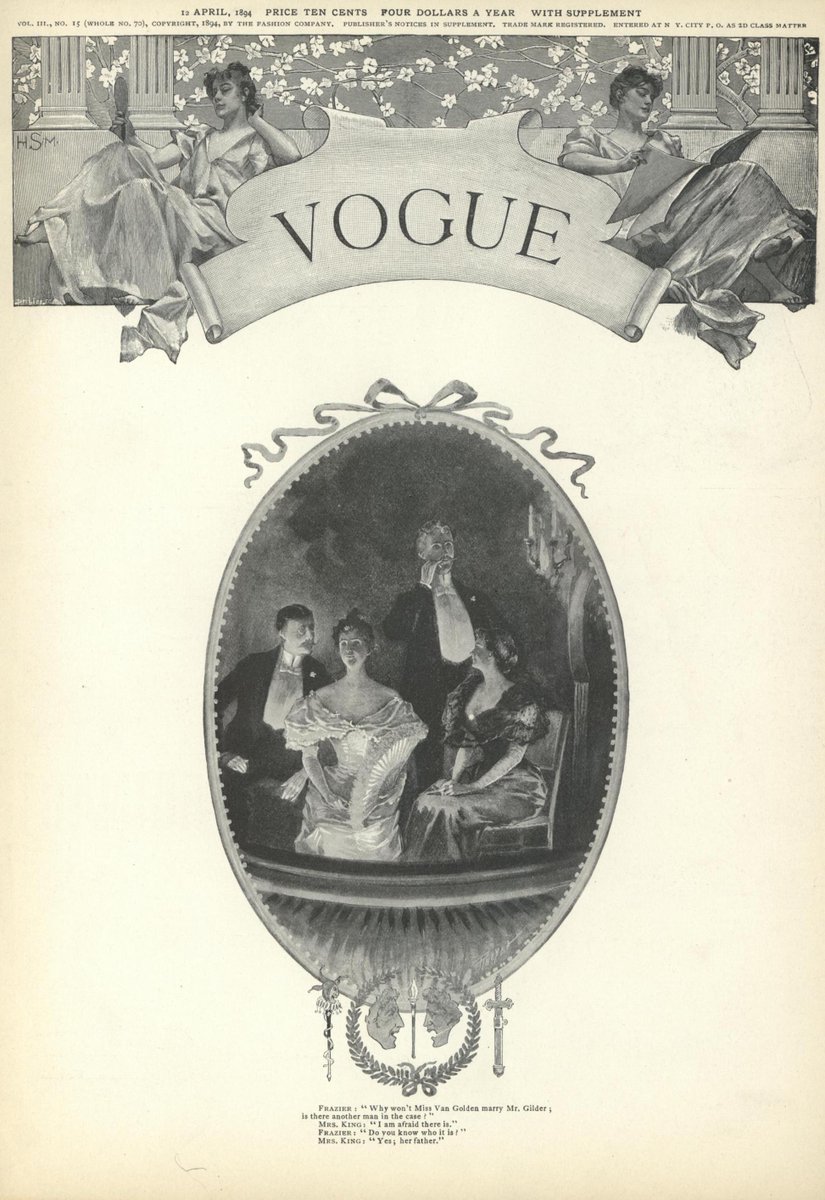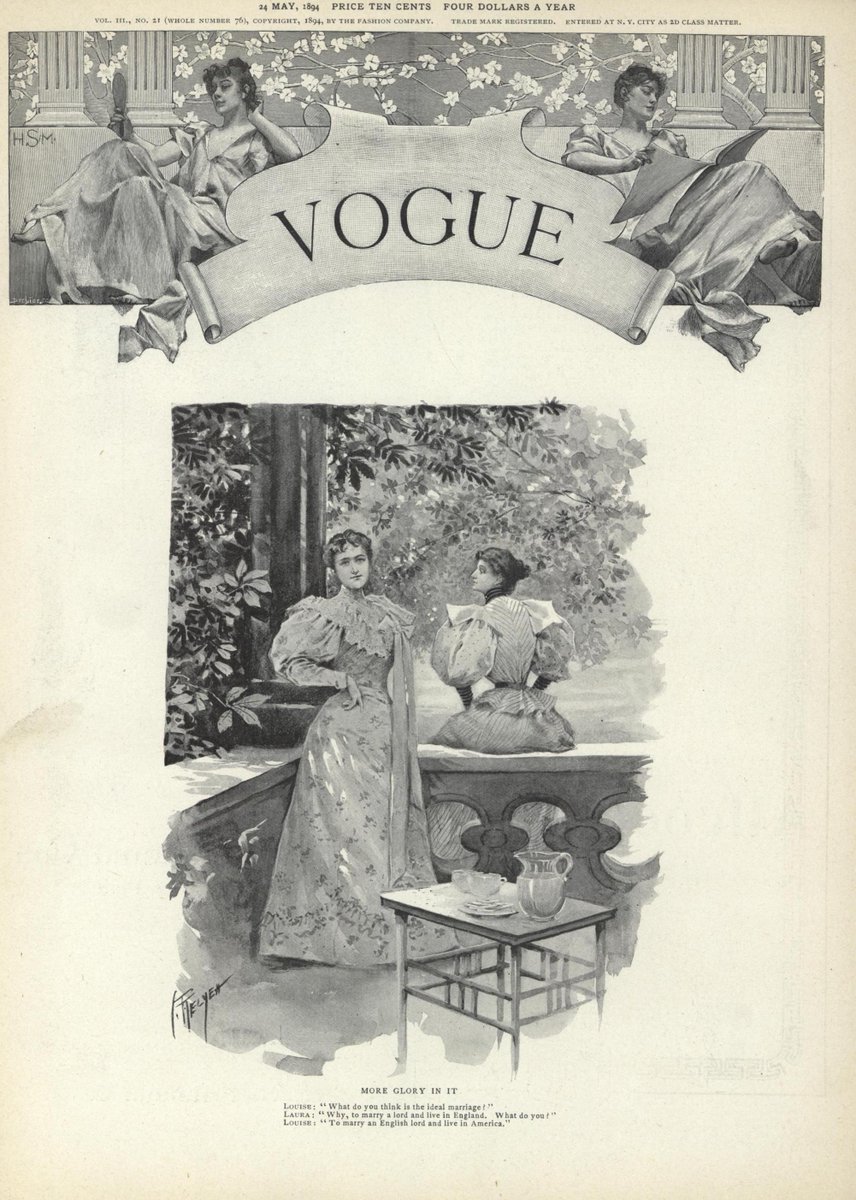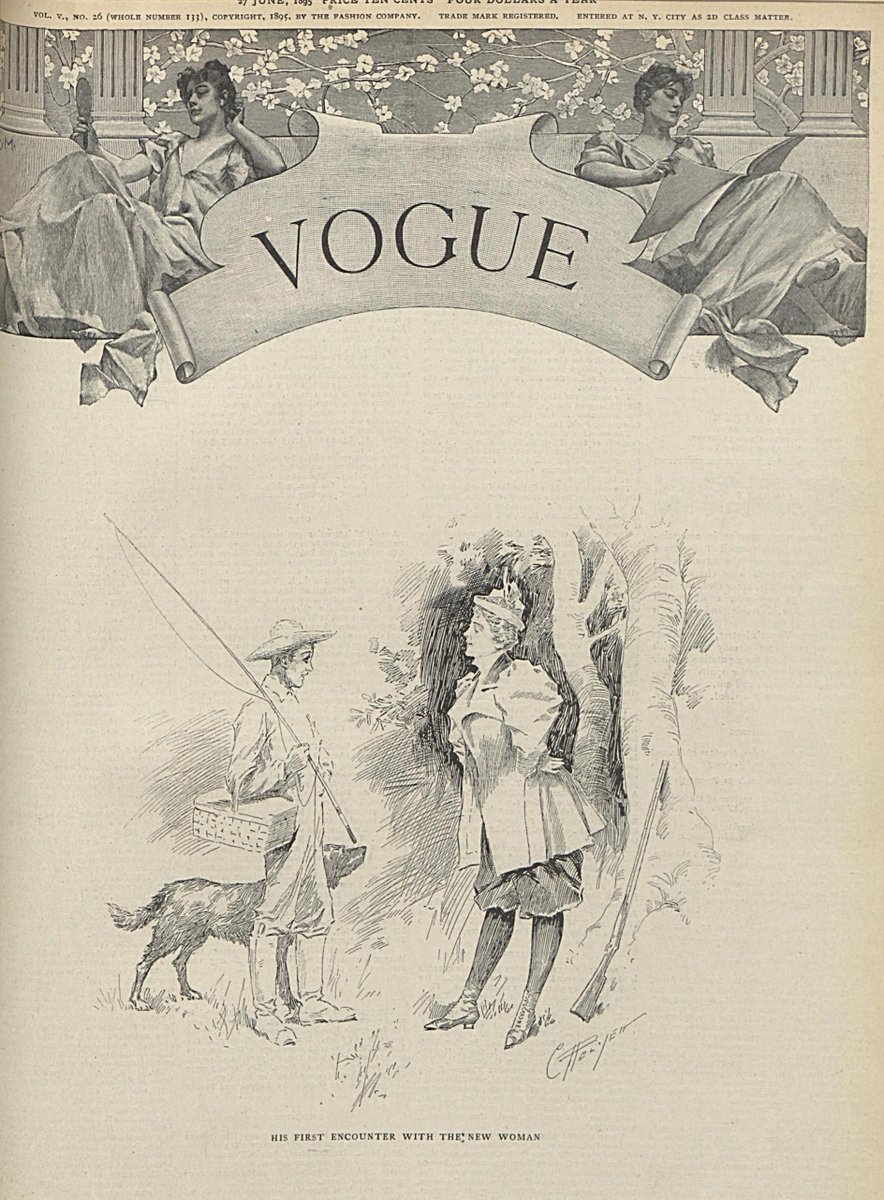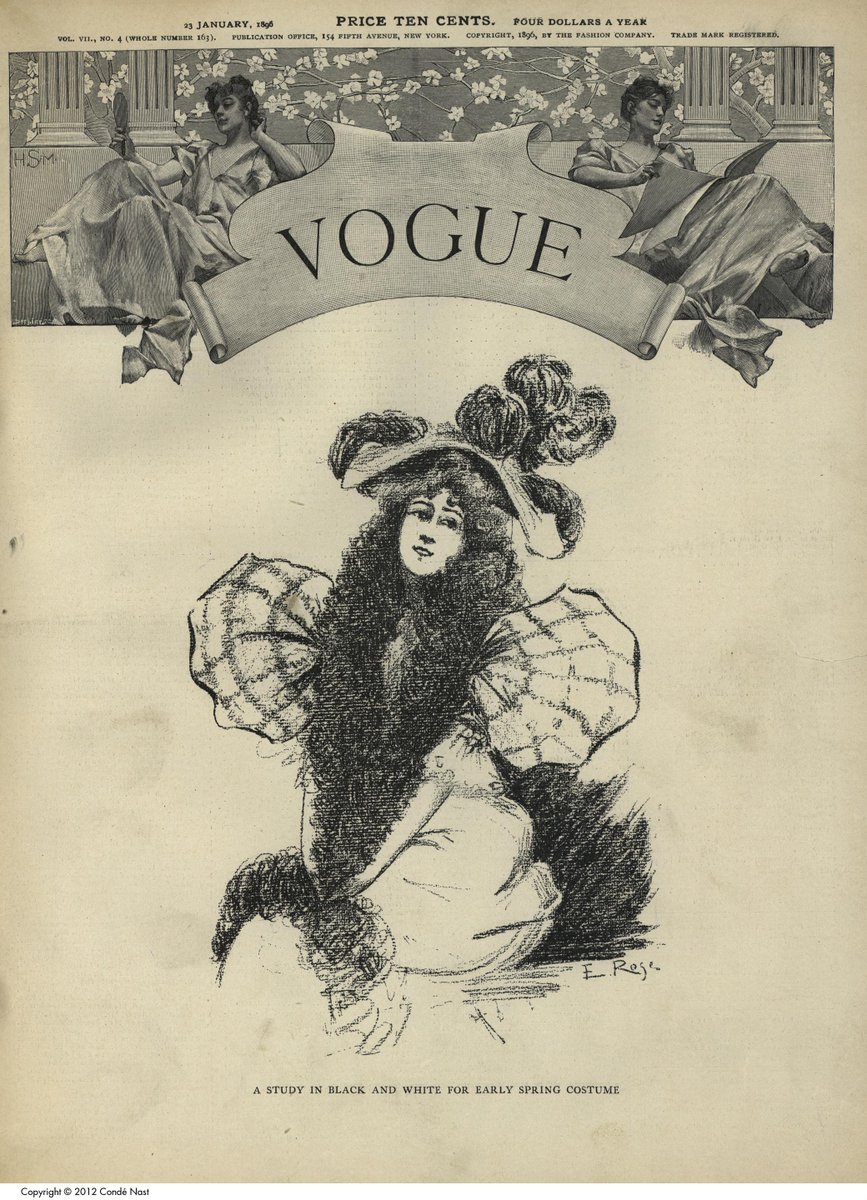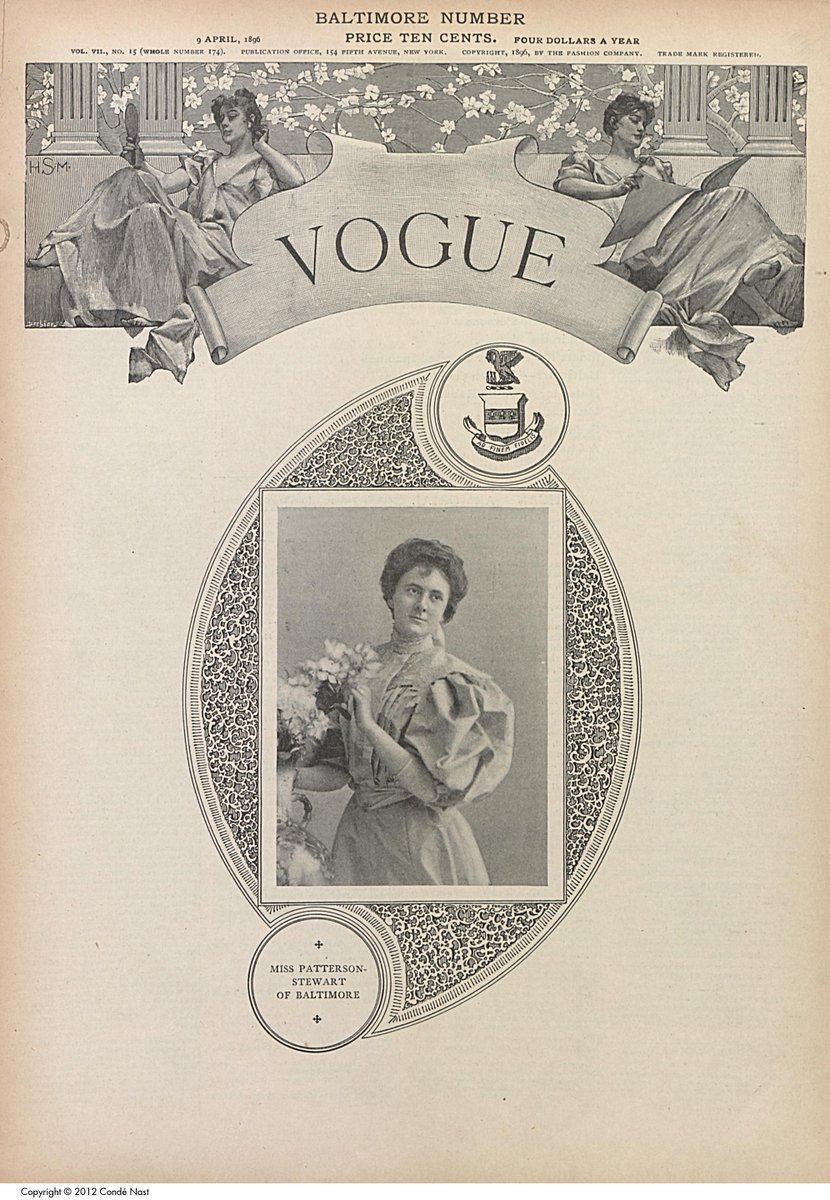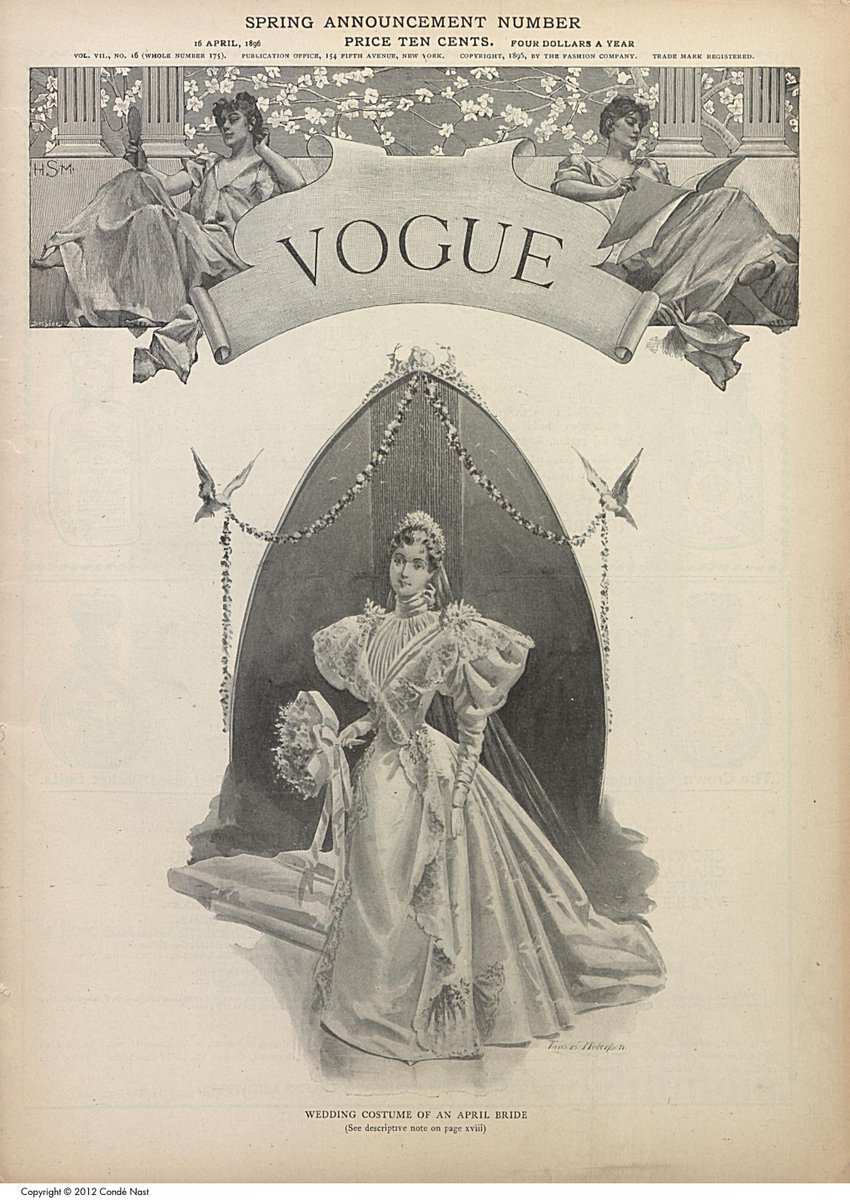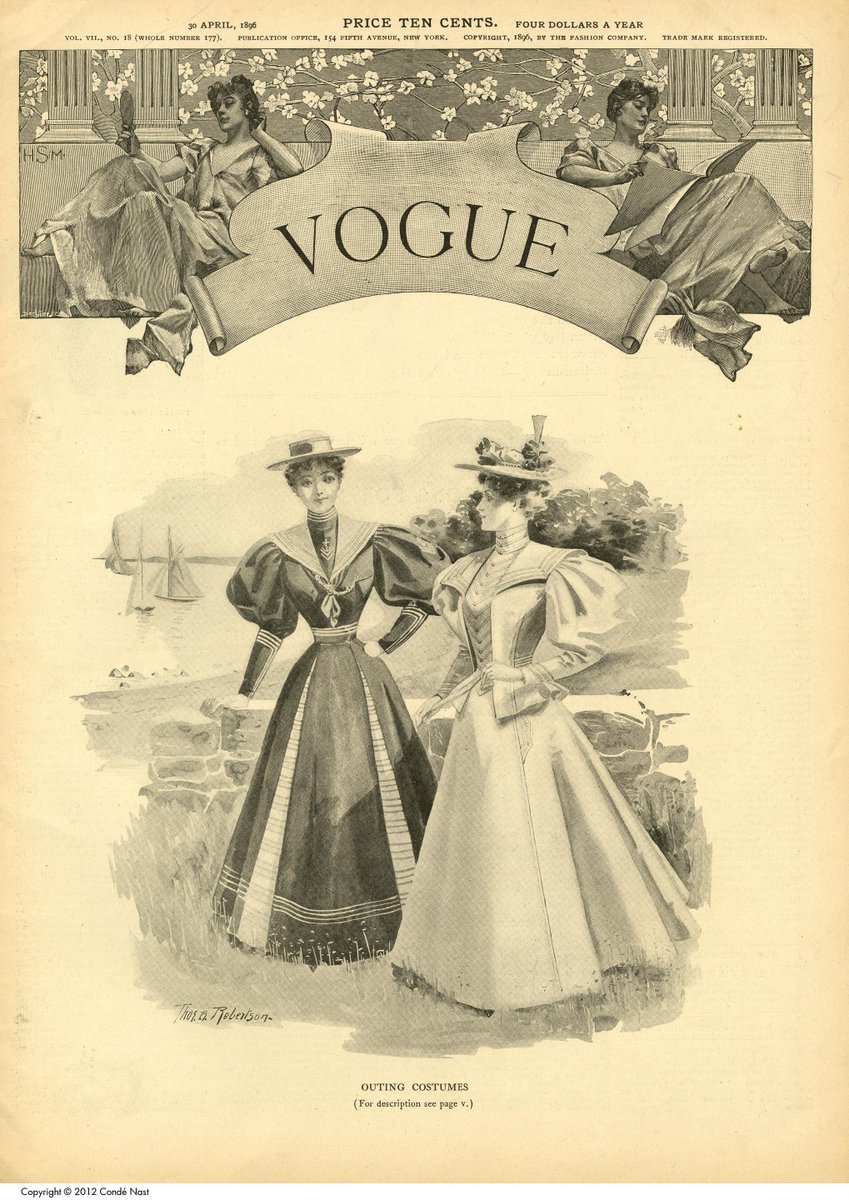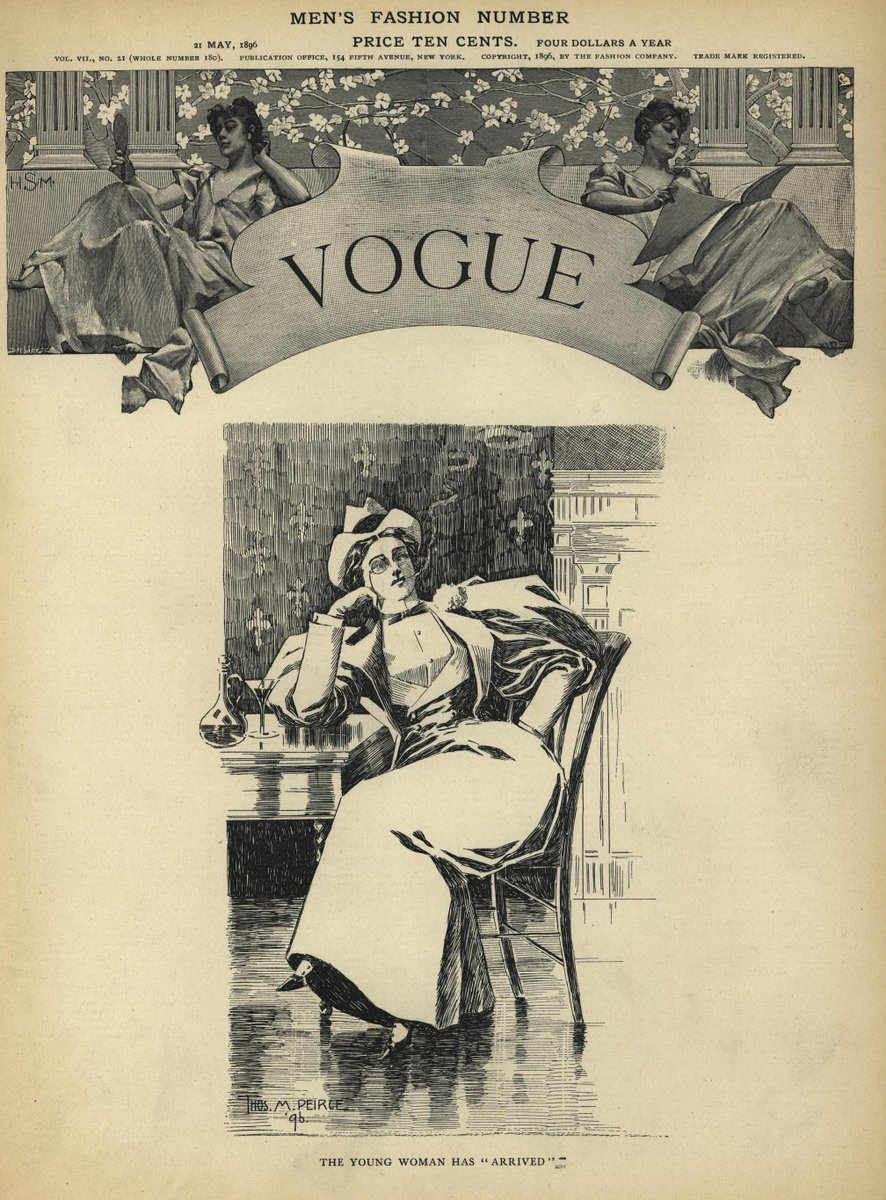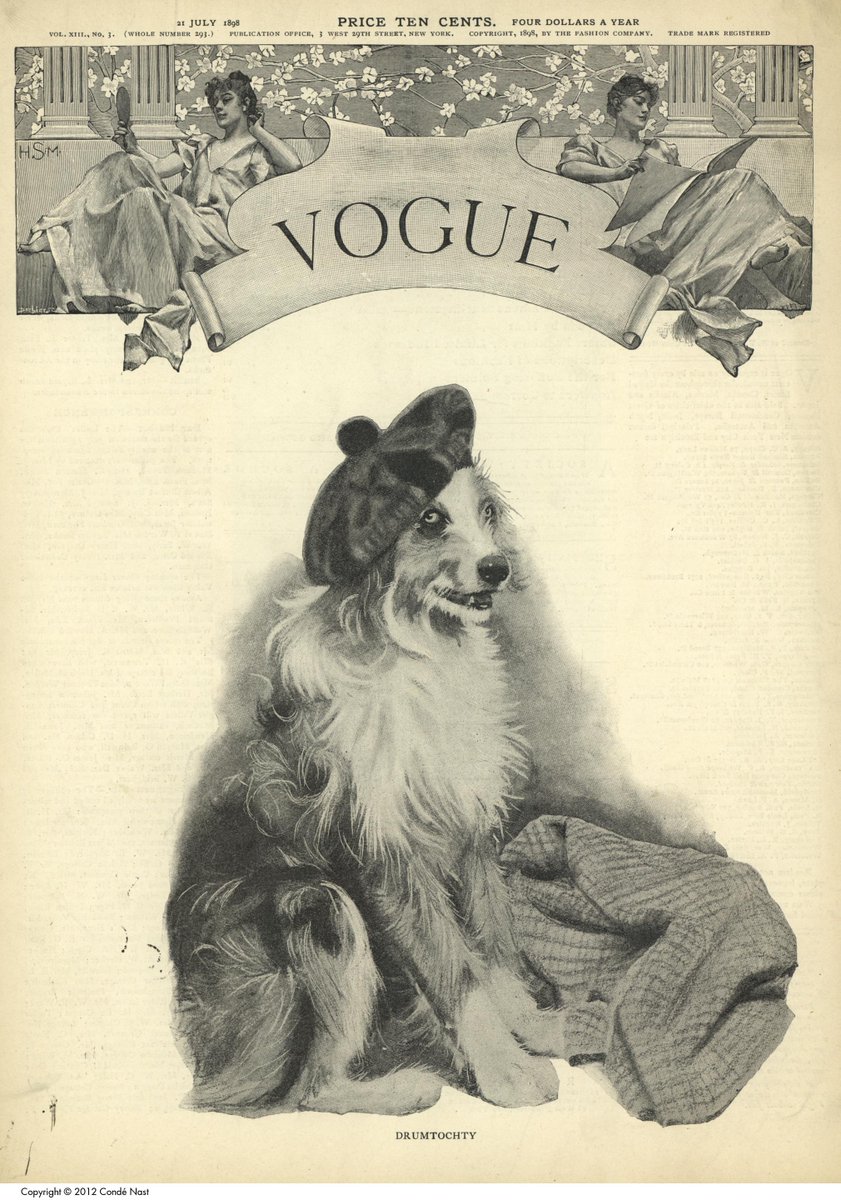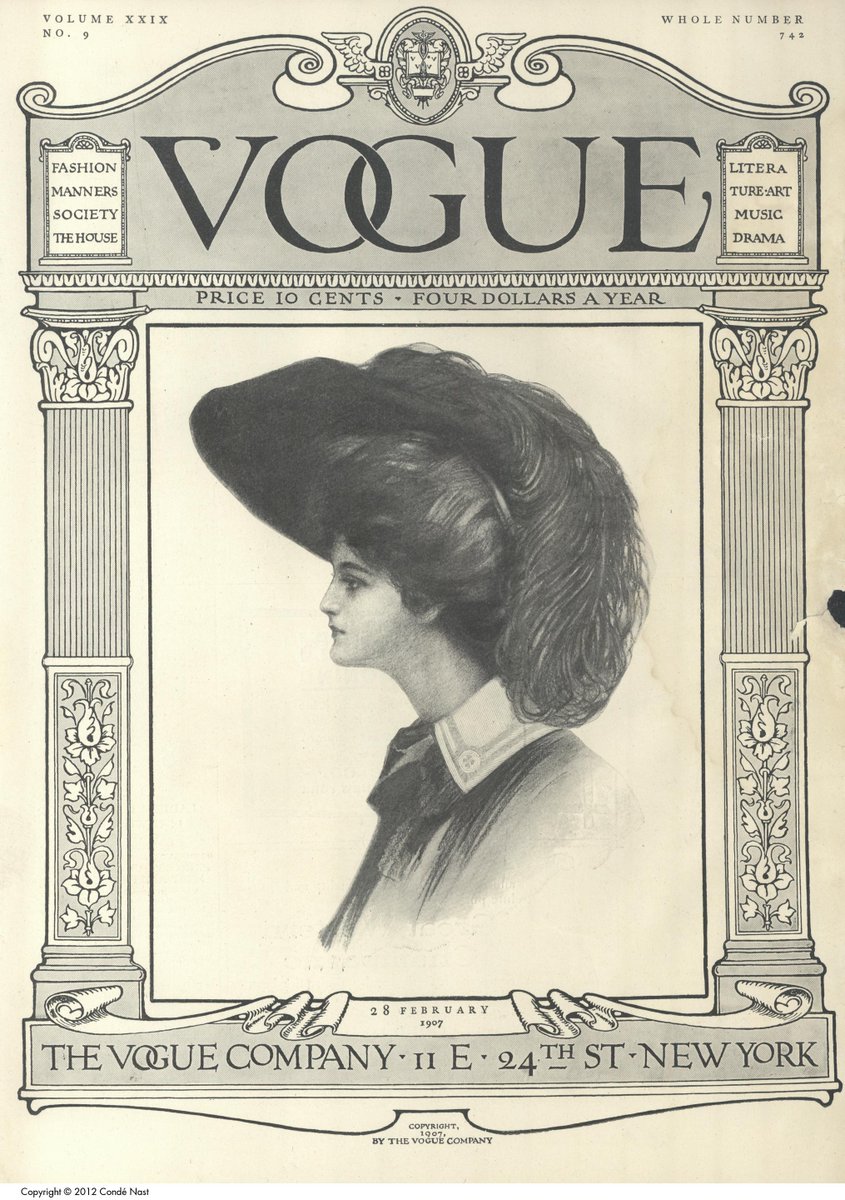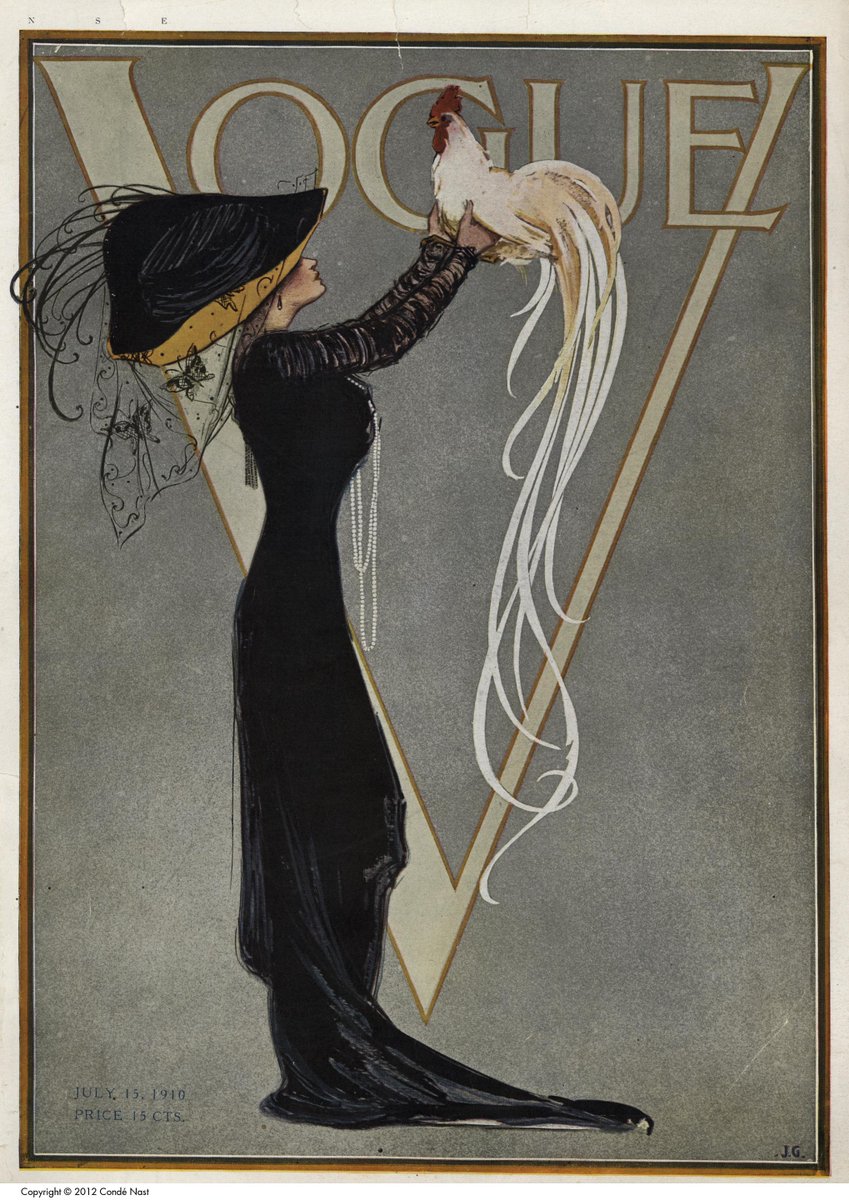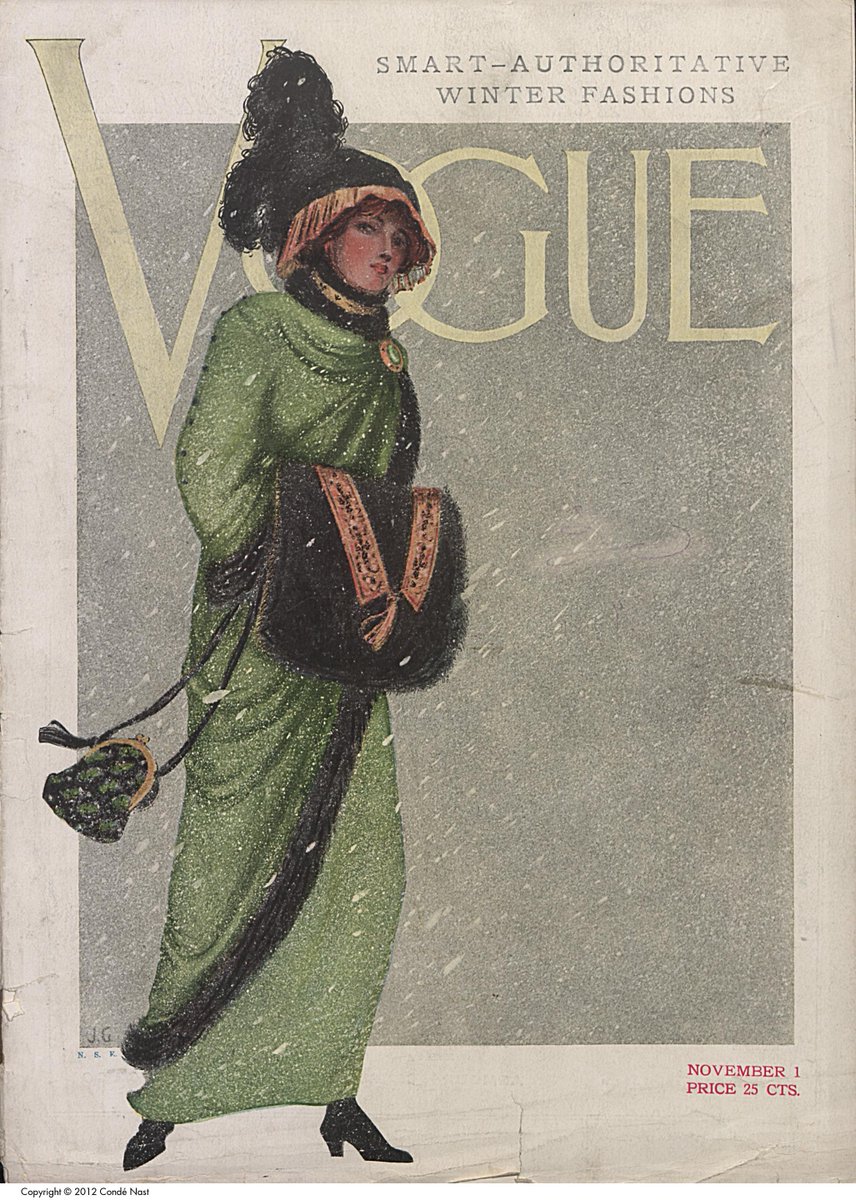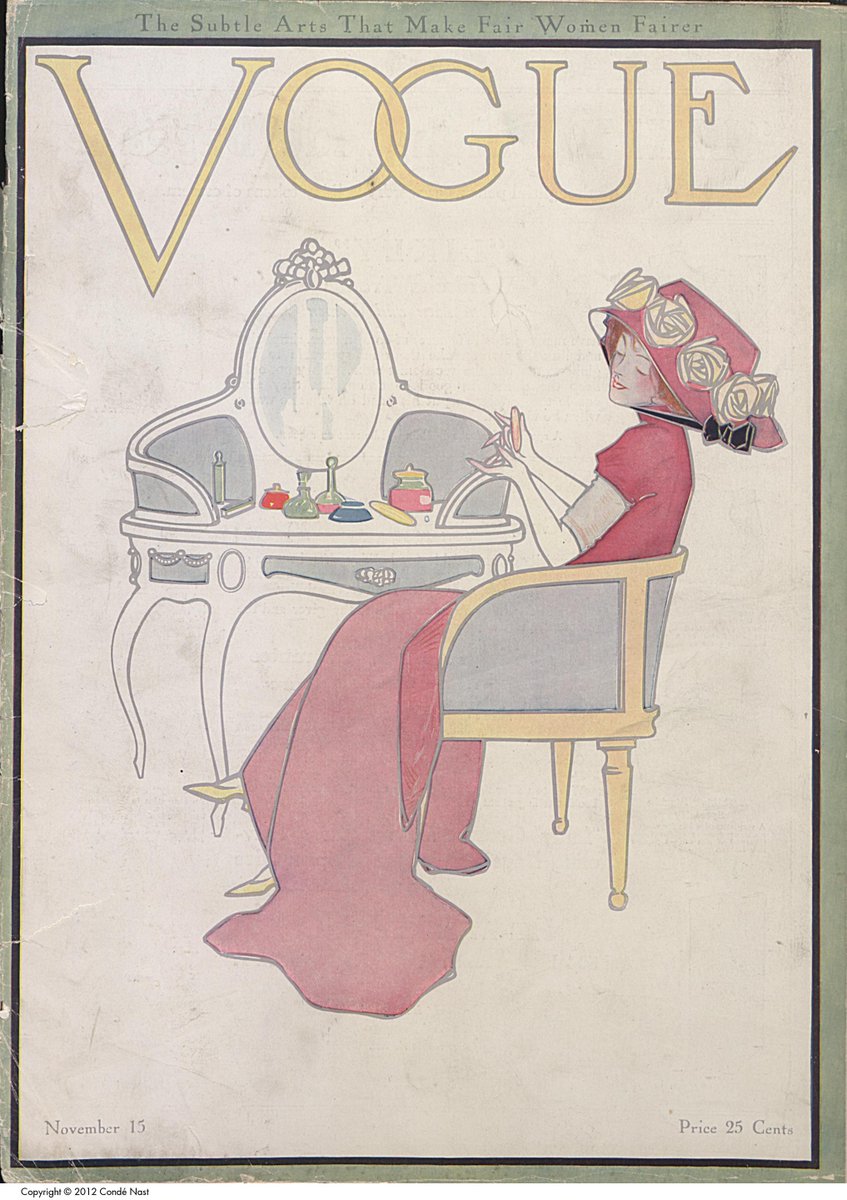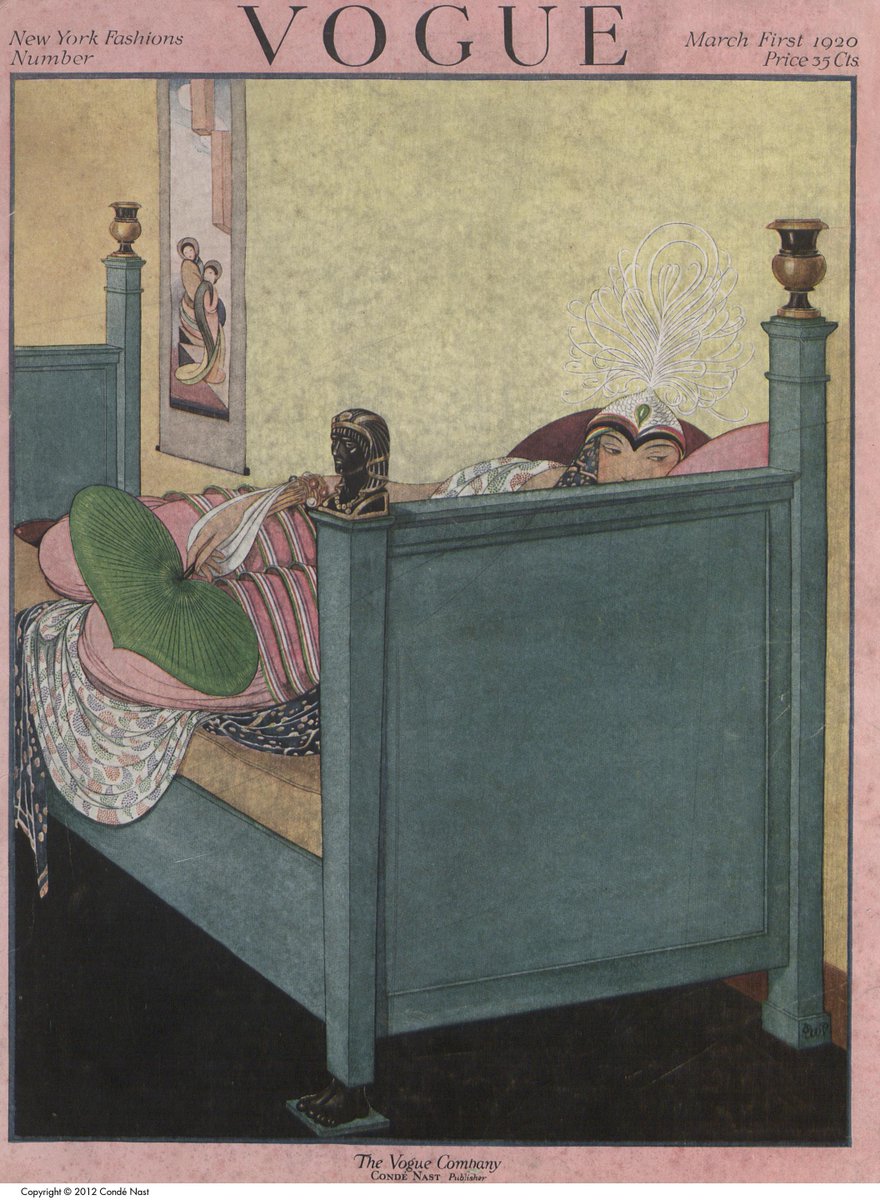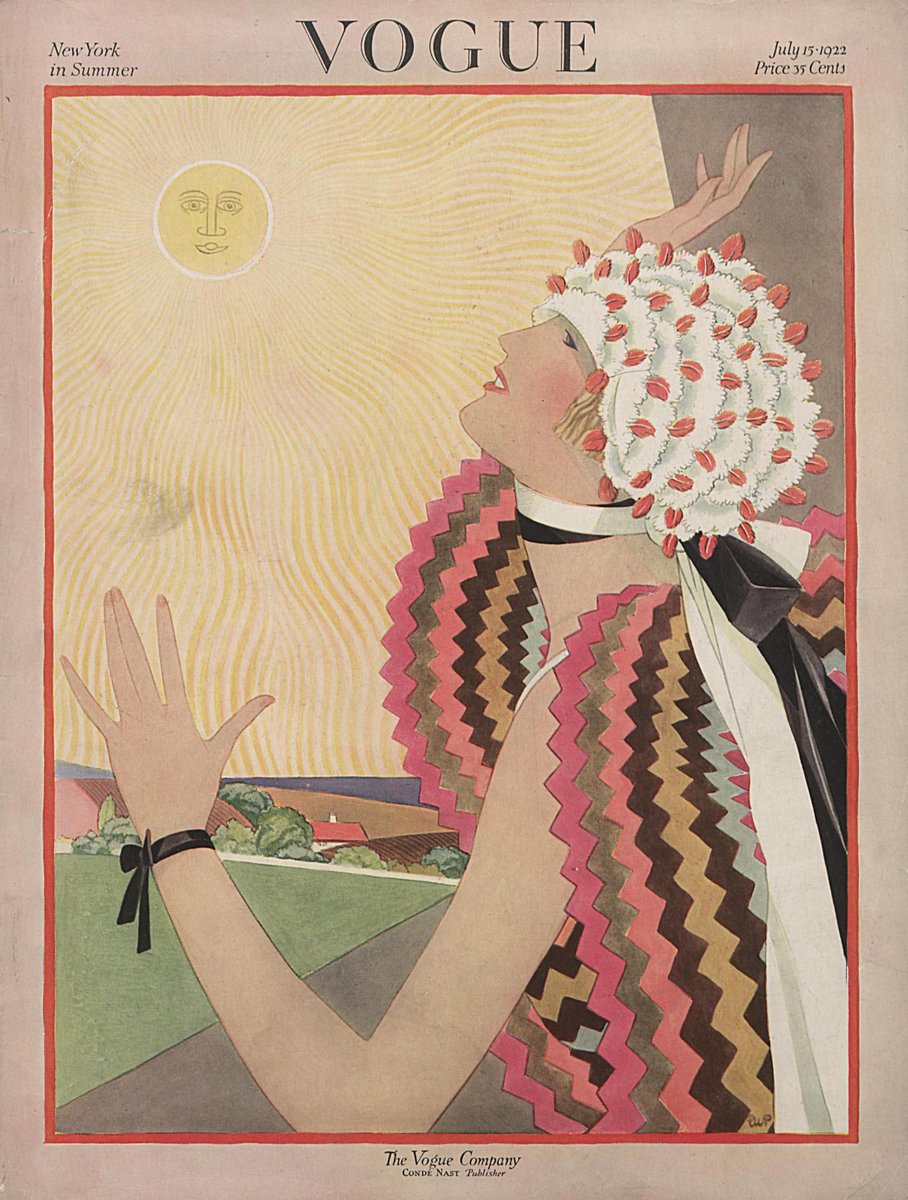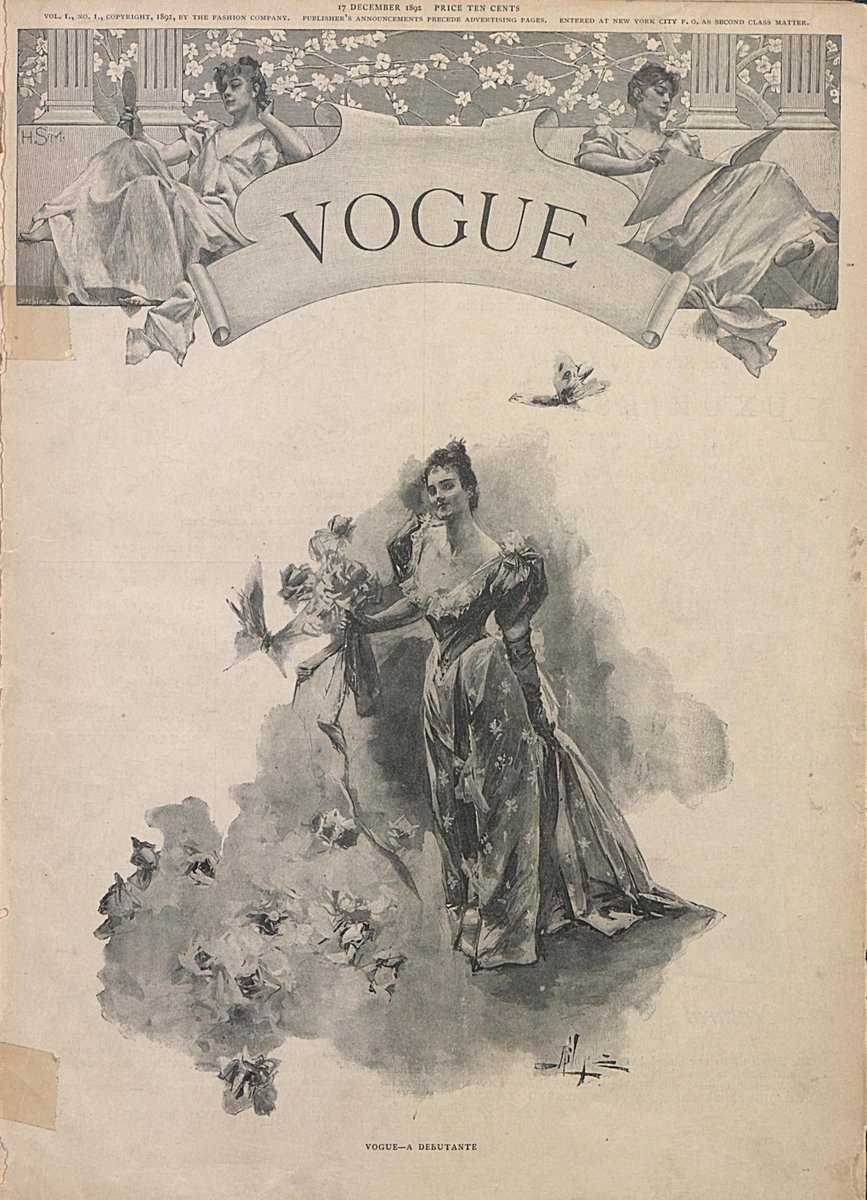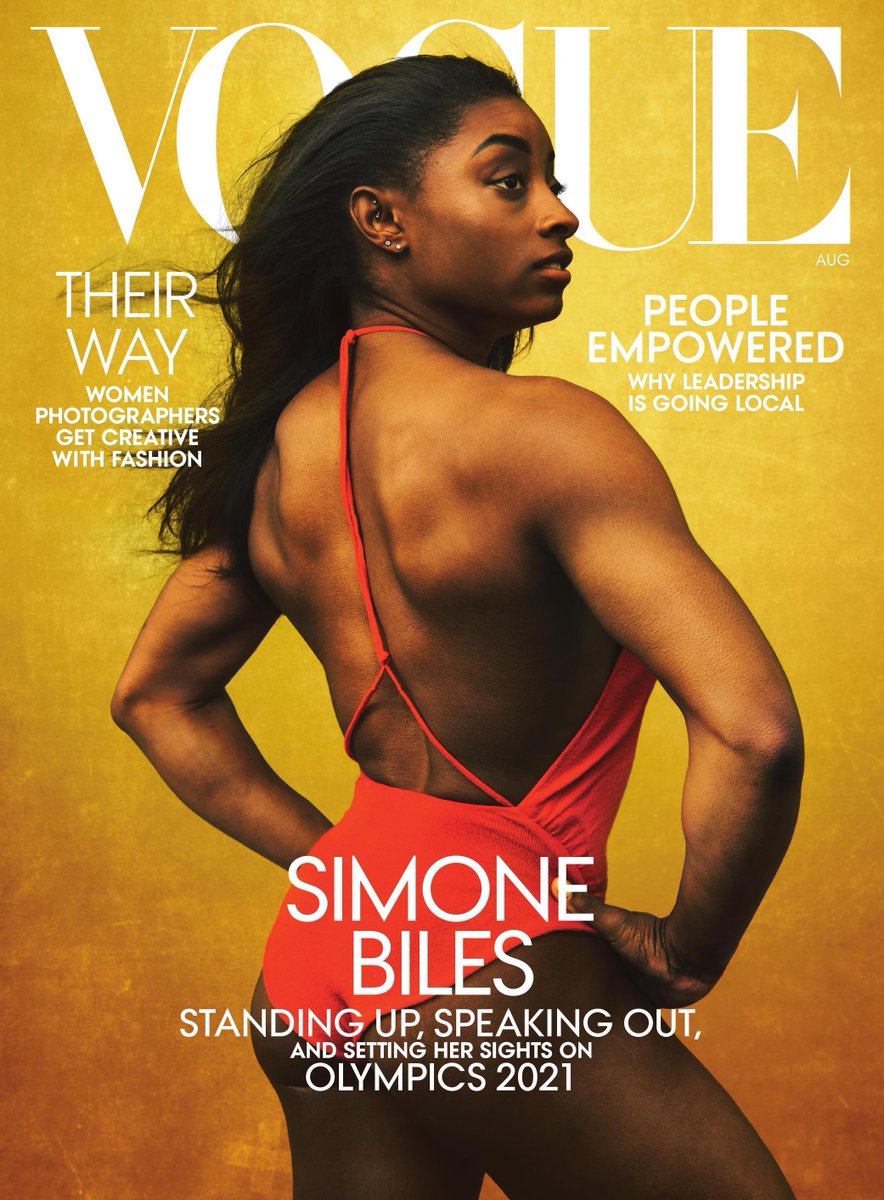Here& #39;s something that might surprise you: early issues of @voguemagazine often featured jokes on their front page!
(1894)
(1894)
[Enlarged caption, in case you can& #39;t read the original small print]
They are, however, the most aesthetically-embellished jokes I& #39;ve seen in a 19thC magazine. The text of the gag could& #39;ve come from any penny magazine, but the presentation is pure Vogue!
(1894)
(1894)
I suspect the joke was partly a pretext to print an attractive cover illustration — like a lot of 19thC illustrated humour (including many Punch cartoons), the caption and image are loosely connected and can work in isolation.
(1894)
(1894)
By 1895, jokes featuring captioned dialogue had been largely phased out. But Vogue continued to print comic images on its cover from time-to-time (alongside more straightforward fashion & picturesque prints), including this satirical encounter with a New Woman!
(1895)
(1895)
Even the fashion prints on early Vogue covers often had a satirical edge, like this pair of images that seem to be mocking trends in animal-based headwear!
(1894 & 1895)
(1894 & 1895)
A lot of the cover jokes on early issues of Vogue magazine focused on love and marriage — this theme loomed large in most 19thC humour, but seems to have been particularly prevalent in magazines targetted at women.
(1895)
(1895)
What I& #39;m getting at here is that humour — and joking more specifically — permeated 19thC culture, even places (such as magazines aimed at fashionable women) that we wouldn& #39;t necessarily expect to find it. The things I post on
@VictorianHumour are only the tip of the iceberg.
@VictorianHumour are only the tip of the iceberg.
I say that we & #39;wouldn& #39;t expect& #39; to find jokes in magazines aimed at fashionable women because most histories of 19thC comedy focus on men & their magazines — one of the main things I& #39;m aiming to do in my project is to recover the experiences of women jokers from this period.
Anyway, back to Vogue: in the interest of balance, I should point out that many of its early covers *did* feature images devoted to fashion and high-society figures. It wasn& #39;t all jokes, alas!
(1895)
(1895)
I& #39;m not sure what to say about this, but here& #39;s a cover of Vogue magazine from 1898 featuring a dog in a tam o& #39; shanter.
¯\_(ツ)_/¯
¯\_(ツ)_/¯
After nearly fifteen years with the same masthead, Vogue& #39;s cover underwent a big redesign in 1907.
Coloured covers — often with more experimental formatting and artistic styles — soon followed. It was common by this point for the model to overlap and obscure part of the masthead, which I had previously assumed to be a more recent practice.
I& #39;m willing to try anything to cope with the heat here in the UK, so prepare to witness my feathered swimming cap in our next Zoom meeting.
- Vogue (1922)
- Vogue (1922)
So what does early Vogue tell us? For one, it& #39;s a reminder that periodicals often change dramatically during their lifespan. The apparent continuity of an unchanged title & unbroken print run can be misleading —their content, format, politics & audience can shift over time.
This is blindingly obvious when comparing issues from 1892 and 2020, but these transformations often happen much quicker and more subtly. A new owner or editor, political pressures, technological innovations, competition from rivals, etc, can suddenly destabilise a periodical.
See, for example, this thread on the surprising origins of the Daily Mirror: https://twitter.com/DigiVictorian/status/1286254257759453184?s=20">https://twitter.com/DigiVicto...
Periodicals are slippery texts in this regard, and historians need to be careful when dealing with them — particularly titles we& #39;ve first come to know at a different point in their lifecycle.

 Read on Twitter
Read on Twitter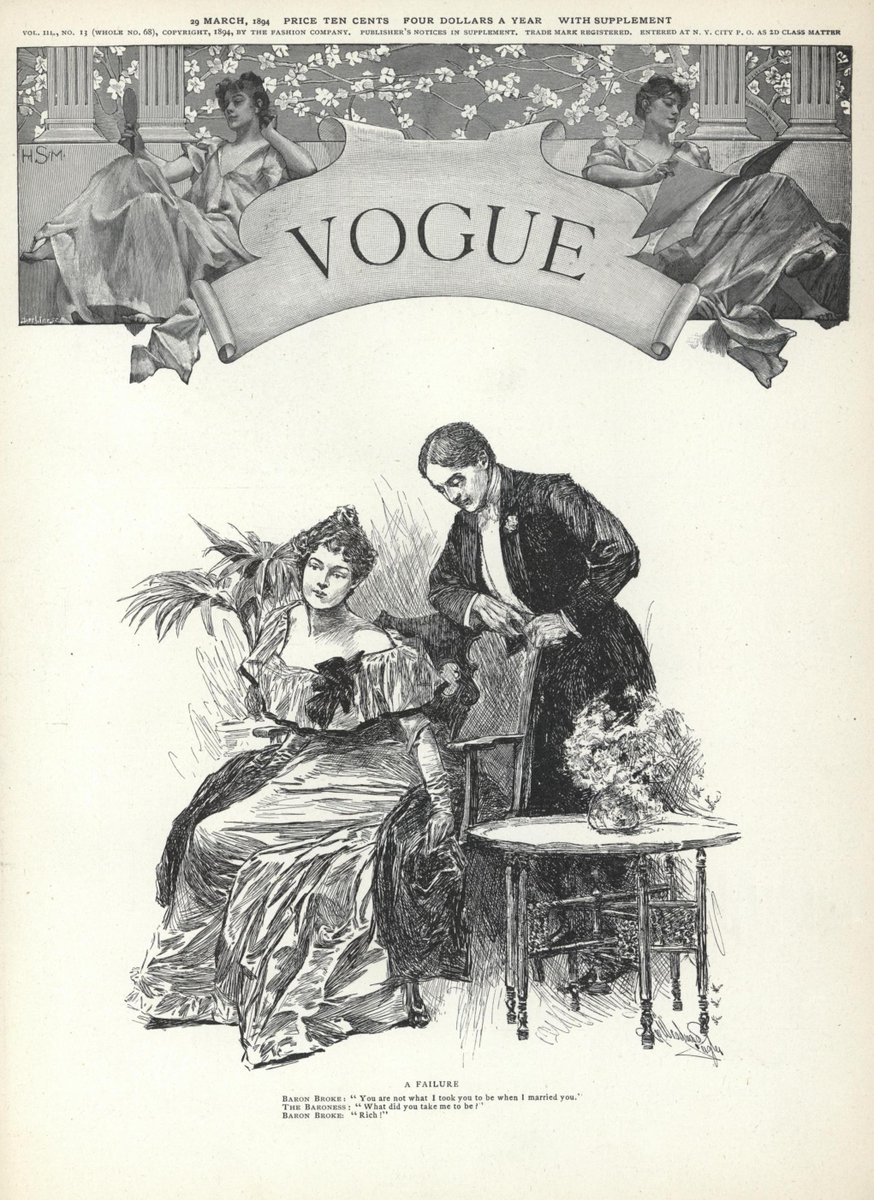
![[Enlarged caption, in case you can& #39;t read the original small print] [Enlarged caption, in case you can& #39;t read the original small print]](https://pbs.twimg.com/media/EfVLW5cXsAEi0-6.png)
